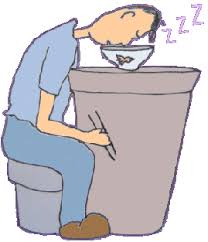Motor learning research evidence to support the HandTutor system, glove and dedicated rehabilitation software, method of and Physical and Occupational Therapy training for arm and hand functional ability improvement.
Tuesday, 19 June 2012
The Effects of Traumatic Brain Injury on Fatigue and Sleepiness
Simon Beaulieu-Bonneau and Charles M. Morin of the École de psychologie, Université Laval, Pavillon Félix-Antoine Savard 2325, rue des Bibliothèques, Québec, Canada conducted a study comparing individuals who suffered from a traumatic brain injury (TBI) to healthy controls (CTLs) measuring sleepiness,fatigue, and sleep and exploring the relationship between each group.
There were 22 adults with moderate to severe TBI and 22 matched healthy CTLs. They underwent one night of polysomnographic (PSG) recording of their sleep followed the next day by the Maintenance of Wakefulness Test (MWT). They also completed a 14-day sleep diary, the Epworth Sleepiness Scale (ESS), the Functional Outcomes of Sleep Questionnaire (FOSQ), and the Multidimensional Fatigue Inventory (MFI).
The results showed that there were no significant group differences on measures of subjective or objective sleepiness, both groups being quite alert. However, TBI participants reported greater consequences of sleepiness on their general productivity, spent more time in their bed at night, and napped more often and for longer periods of time during the day. Subjective fatigue was significantly higher in TBI participants on the general, physical, and mental fatigue MFI subscales. There were no between-group differences on any sleep parameters derived either from PSG or sleep diary.
The conclusions they reached were that fatigue appeared to be a more prominent symptom than sleepiness when it was assessed between 1 and 11 years after TBI. Patients that participated who suffered from TBI used compensatory strategies such as increasing time spent in bed and napping during the day in this sample.
When TBI causes immobility of a limb the appropriate physical therapy solution should be found. For example the TUTOR system of physical therapy products know as the: HANDTUTOR, ARMTUTOR, LEGTUTOR and 3DTUTOR are used extensively to accomplish the proper exercise program.
Physical rehabilitation is being done in the USA at major rehabiliaiton in-patient and out-patient clinics as well as at private physical therapy clinics. Many patients who have had a TBI or stroke, cerebral palsy or spinal cord injury can also avail themselves of the TUTOR system through the use of tele rehabilitation. These physical therapy products have been developed to allow for functional rehabilitation of the whole body including the upper and lower extremity. The system consists of ergonomic wearable devices and dedicated rehabilitation software that provides patient instructions and feedback to encourage intensive and controlled exercise practice. In this way, the TUTOR system allows for exercise of multijoints within the normal movement pattern which prevents the development of undesired and compensatory joint movement and therefore ensures better performance of functional tasks. This is important in stroke, brain, spinal cord (SCI) and Cerebral palsy rehabilitation in addition to other neurological and orthopedic injury and disease.
Additional features of the TUTOR system include quantitative evaluation and objective follow up that is important in the physiotherapists treatment of the exercises.
For additional information see WWW.MEDITOUCH.CO.IL
Subscribe to:
Post Comments (Atom)
No comments:
Post a Comment